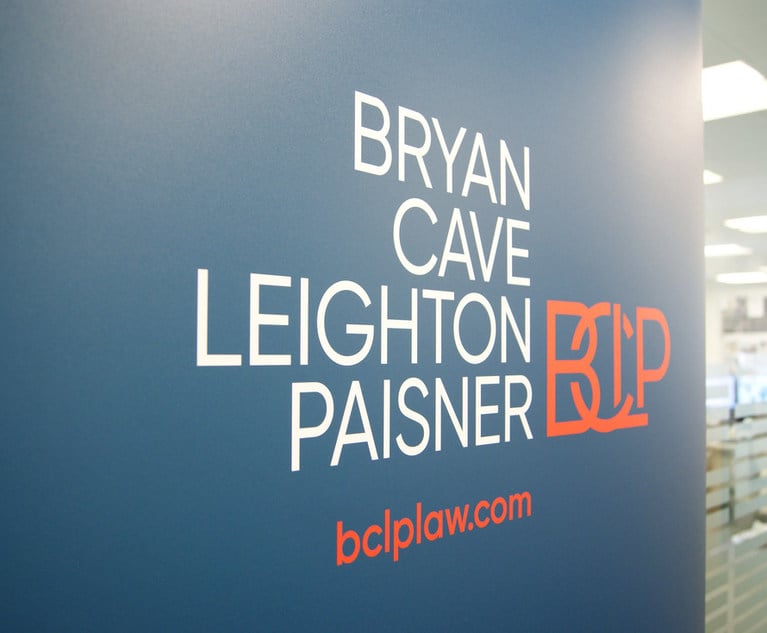 Credit: Vasin Lee/Shutterstock.com
Credit: Vasin Lee/Shutterstock.comClients Are Saying Goodbye to Email, and Lawyers Are Forced to Adapt
Casual new modes of communication, favored by clients, are complicating life for lawyers.
October 03, 2019 at 12:00 PM
9 minute read
The original version of this story was published on The American Lawyer
Long accustomed to writing formal letters and assiduously crafting contracts, today's lawyers may have finally learned the art of brevity.
As email goes the way of phonecalls – increasingly perceived as a formal communication channel requiring considerable time and effort – many attorneys are finding themselves communicating with clients through text messages or chat platforms.
"I text clients all the time, and I think many of my colleagues do," says Etan Mark, a partner at Mark Migdal & Hayden. But it's not just texts – if so required, Mark also says he talks with clients over WhatsApp and Google Chat.
Of course, when necessary, Mark has to properly account for information sent through non-email channels. "To the extent we receive material information in a non-email communication from a client, the practice of our firm is to retain that message," he explains.
But his firm does not actively manage the way he or other attorneys interact with clients, and there are signs that it's not alone. The 2019 Legaltech News Law Firm Tech Survey found that only one third of its 36 law firm respondents had an official policy for collecting non-email sources of electronic data, underscoring that most don't supervise their attorneys' communications.
The reasoning behind this lenient approach comes down to the belief that being too restrictive or heavy-handed with how attorneys communicate is unrealistic in an industry focused on client service. But that isn't to say there aren't limits. Some firms, for instance, will designate specific communication channels as the ones their attorneys should use for privileged conversations. Others instead trust their lawyers to abide by the firm's record-retention policies when using non-email communications.
Yet few firms completely restrict the use of non-email communication channels outright, which for their attorneys can be both a blessing and a curse. While some say that using these channels has helped them become more productive, they also note there are risks in how this technology is altering client interactions. At the end of the day, many admit it's just another set of risks that they'll have to learn to live with.
|The client trap
For attorneys, communicating in the digital age can require a balancing act of sorts. With so many ways to interact with clients, "we have a divergence of goals here", explains Kermit Wallace, chief information officer at Day Pitney. He says there is an inherent tension in wanting to protect client data while also wanting to be as available and responsive to clients as possible.
How firms address this tension will likely differ based on their culture and the clients and industries they serve. A common solution many enact, however, is to approve certain communication channels for business communications, which they can vet beforehand for security features such as encryption or integration with enterprise mobility management software.
Anna Mercado Clark, a partner at Phillips Lytle, notes that unsanctioned channels often include texts and chat platforms, which she advises should be used as a place to discuss logistical issues, such as scheduling, instead of substantive issues.
The problem, however, is uncooperative clients. Clark calls that a "tricky situation", but she doesn't think "the only options are to allow [the] use of a unapproved channel or cease working with a client". She notes that depending on the situation, firms can try a number of resolutions, including finding a technology solution to help clients communicate the way they want or vetting clients' unapproved channel.
Wallace understands this challenge first-hand. At his firm, "the preferred – I'm hesitant to say mandated – way" to communicate internally and with clients is through email, phone or physical letter, he says.
Still, Wallace acknowledges that sometimes there's no getting around talking on an unapproved channel. "We want to be responsive to our client, and obviously in a channel that is not as controlled, I think the attorney [needs to] be more sensitive with what they would communicate."
It's situations like those that make some wary of directing clients toward specific communication methods in the first place. "We're in a service industry. We serve our clients, so it's hard to come up with a policy that could be contrary to the way our clients want to communicate," says James Paulino II, a partner at Goldberg Segalla.
Instead of pre-approving communication channels, Goldberg Segalla relies on its record management policy to ensure that any relevant business information, wherever it may be, is properly retained. "We have electronic files for all our cases, and attorneys have the obligation to retain and store all relevant information," Paulino says.
To be sure, Paulino notes that in terms of conducting business, the firm typically "sticks to email". But that doesn't always mean its clients do as well. "Unfortunately, clients and non-parties use text… You'll email clients, and then they'll text you because they have your cellphone number."
But that's just the reality of being an attorney in 2019. While Paulino says his firm has secure ways to communicate and transfer information, "at the end of the day if your client is going to text message us, we can't tell them, 'stop' – they're the client".
|Whose calculated risk?
The different approaches firms take to addressing their staff's use of non-email communications ultimately come down to whether it falls on the firm itself or its attorneys to take the lead in managing client communication risks.
Judith Flournoy, chief information officer at Kelley Drye & Warren, notes that using non-email communication is "a calculated risk on some level, but all communications have some inherent calculated risk unless you are physically standing in front of someone having a conversation".
Whether a firm takes the lead in mitigating this risk can largely depend on the sensitivity of the information it's handling. Firms working in the research and development, patent and intellectual property, or M&A and IPO spaces, for instance, are more likely to actively manage and restrict the way their attorneys exchange information with clients, Flournoy says.
But even if a firm enacts policies or technology solutions around client communications, lawyers still have ethical obligations to understand the technology they use and to safeguard their client's information.
It is not sufficient, Paulino explains, to rely on security or retention technology to automatically protect and preserve client communications. "At the end of the day, attorneys have the ethical obligation to maintain their files to practise law. And you cannot automate the satisfaction of an ethical obligation. I guess you can try to, but it seems, from an attorney's perspective, counterintuitive to me."
Still, attorneys' ethical obligations mean they may have to keep up with the quick pace at which current communication channels change and new ones arise. Wallace notes that the platforms clients use are constantly evolving. "I guarantee you three years ago they didn't want to use Slack, because it essentially didn't exist and wasn't an option," he says.
For some, keeping up with all these changes may just not be realistic. The better option, they believe, is trying to keep communications on a few approved channels. "That's the best you can do," Wallace says. "Because, otherwise, to craft a policy around every other non-email communication channel is a fool's errand."
|Keeping it casual
For all the potential diligence non-email communications require, they have undoubtedly made attorneys' lives easier in at least one regard: "[The] number one benefit of all this stuff is instead of getting a thousand emails a day, you get a hundred emails a day," Mark explains.
Suffice to say, certain communications are just more suited to text and chat channels. "Where I might ask a very simple question, I might get an immediate answer, whereas it could sit in someone's [email] inbox for a while," Flournoy says.
But it's not all upside. Non-email communications haven't just changed where attorneys and clients interact; they've changed how they interact. While email correspondence can be formal and structured, text and chat messages tend to be more casual, sometimes not ideal for a profession accountable for the advice offered.
"When a lawyer communicates with a client over text messages, it's the same exact effect from a liability standpoint of communicating with a formal letter with your letterhead at the top," Mark says, adding: "The only difference is that one form of communication seems to be more flippant than the other."
It's not hard to see why some firms may want to steer their attorneys clear of text and chat messaging altogether. "What many law firms are afraid of, especially large law firms, is that lawyers tend to be more casual over text messages, and they are terrified those text messages might show up in a malpractice lawsuit," Mark says.
The good thing, however, is that few, if any, expect non-email communication channels to completely replace email anytime soon. But they're not going away either. And while some of these channels, such as texting, have been around for years, Flournoy notes that they're fairly new to legal practices.
As these tools continue to proliferate in legal, she believes that it may be time for "more educational opportunities around when or when not to use texting, when it's appropriate and not appropriate". After all, as with any technology, there's a lot of catching up to do. "I think the interesting point of this," she says, "is maybe it's time we start talking about it."
Email: [email protected]
This content has been archived. It is available through our partners, LexisNexis® and Bloomberg Law.
To view this content, please continue to their sites.
Not a Lexis Subscriber?
Subscribe Now
Not a Bloomberg Law Subscriber?
Subscribe Now
NOT FOR REPRINT
© 2024 ALM Global, LLC, All Rights Reserved. Request academic re-use from www.copyright.com. All other uses, submit a request to [email protected]. For more information visit Asset & Logo Licensing.
You Might Like
View All
Trump and Latin America: Lawyers Brace for Hard-Line Approach to Region

BCLP Mulls Merger Prospects as Profitability Lags, Partnership Shrinks

Trending Stories
Who Got The Work
Michael G. Bongiorno, Andrew Scott Dulberg and Elizabeth E. Driscoll from Wilmer Cutler Pickering Hale and Dorr have stepped in to represent Symbotic Inc., an A.I.-enabled technology platform that focuses on increasing supply chain efficiency, and other defendants in a pending shareholder derivative lawsuit. The case, filed Oct. 2 in Massachusetts District Court by the Brown Law Firm on behalf of Stephen Austen, accuses certain officers and directors of misleading investors in regard to Symbotic's potential for margin growth by failing to disclose that the company was not equipped to timely deploy its systems or manage expenses through project delays. The case, assigned to U.S. District Judge Nathaniel M. Gorton, is 1:24-cv-12522, Austen v. Cohen et al.
Who Got The Work
Edmund Polubinski and Marie Killmond of Davis Polk & Wardwell have entered appearances for data platform software development company MongoDB and other defendants in a pending shareholder derivative lawsuit. The action, filed Oct. 7 in New York Southern District Court by the Brown Law Firm, accuses the company's directors and/or officers of falsely expressing confidence in the company’s restructuring of its sales incentive plan and downplaying the severity of decreases in its upfront commitments. The case is 1:24-cv-07594, Roy v. Ittycheria et al.
Who Got The Work
Amy O. Bruchs and Kurt F. Ellison of Michael Best & Friedrich have entered appearances for Epic Systems Corp. in a pending employment discrimination lawsuit. The suit was filed Sept. 7 in Wisconsin Western District Court by Levine Eisberner LLC and Siri & Glimstad on behalf of a project manager who claims that he was wrongfully terminated after applying for a religious exemption to the defendant's COVID-19 vaccine mandate. The case, assigned to U.S. Magistrate Judge Anita Marie Boor, is 3:24-cv-00630, Secker, Nathan v. Epic Systems Corporation.
Who Got The Work
David X. Sullivan, Thomas J. Finn and Gregory A. Hall from McCarter & English have entered appearances for Sunrun Installation Services in a pending civil rights lawsuit. The complaint was filed Sept. 4 in Connecticut District Court by attorney Robert M. Berke on behalf of former employee George Edward Steins, who was arrested and charged with employing an unregistered home improvement salesperson. The complaint alleges that had Sunrun informed the Connecticut Department of Consumer Protection that the plaintiff's employment had ended in 2017 and that he no longer held Sunrun's home improvement contractor license, he would not have been hit with charges, which were dismissed in May 2024. The case, assigned to U.S. District Judge Jeffrey A. Meyer, is 3:24-cv-01423, Steins v. Sunrun, Inc. et al.
Who Got The Work
Greenberg Traurig shareholder Joshua L. Raskin has entered an appearance for boohoo.com UK Ltd. in a pending patent infringement lawsuit. The suit, filed Sept. 3 in Texas Eastern District Court by Rozier Hardt McDonough on behalf of Alto Dynamics, asserts five patents related to an online shopping platform. The case, assigned to U.S. District Judge Rodney Gilstrap, is 2:24-cv-00719, Alto Dynamics, LLC v. boohoo.com UK Limited.
Featured Firms
Law Offices of Gary Martin Hays & Associates, P.C.
(470) 294-1674
Law Offices of Mark E. Salomone
(857) 444-6468
Smith & Hassler
(713) 739-1250







